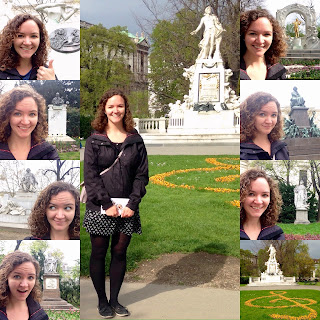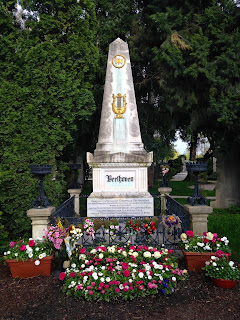I will admit freely that spending four months abroad is much different from packing up your life and moving to another country, especially when the "where" and "how long" of your stay are unknown and somewhat out of your hands, and when you sometimes don't know where you'll be living two weeks out. As I've written, simple life tasks become difficult: Why have I been here three weeks with no cell service and no Internet? Do I have health insurance or not? Did she say 50 Euros would be charged to my account or credited to my account? In which aisle can I find the hair mousse in this stupid supermarket?
Nearly two years ago, I stepped off a train from Paris and took my first look around La Roche-sur-Yon, a rather small town. In the absence of a point person at an American university to contact when times got tough, I eventually came to lean heavily on colleagues and friends, exasperatedly bringing them my lists of inane questions and difficulties.
My colleagues at the three collèges I worked at over the past two years (fifteen English teachers plus several other teachers and staff members who reached out as well!) have been incredible beyond words. They responded to my 11pm emails asking about the health system; they braved nasty bouchons (traffic jams) to drive me to and from work; they invited me to spend days or even weeks with them and their families; they made sure I had housing and offered their spare rooms just in case; they texted me to wish me happy holidays, to check in and to plan lessons, or just to share funny stories.
My five English department colleagues from Belleville took me out to dinner mid-May in Les Sables d'Olonne. May 31st at the collège Saint Exupéry was certainly my most difficult "final day" of all; most of my classes made and signed goodbye cards and my colleagues presented me with gifts at the morning pause (break) in front of all the staff. I very much appreciate that my Belleville colleagues were always caring and never failed to nag me for all the right things...or to text me and make me laugh.
During the previous week, my English colleagues from collège Haxo had also taken me out for lunch at a lovely crêperie in La Roche. About a month later, at the beginning of July, I was able to attend their end-of-the-year dinner to say goodbye to all the staff. I found Haxo's staff to be fun and dynamic with a great sense of humor (which is necessary when you work in a city school!). I'll never forget my fun stories of students at that school, nor will I forget the staff lounge ambiance and laughs.
One last surprise was getting to go out to lunch with a handful of colleagues from collège Soljenitsyne, where I worked in Aizenay during my first year. I had almost forgotten the joys and antics of that staff until I heard their banter again. After conversations and many laughs, a delicious meal, coffee and more laughs at my colleague's home, and finally, so many bises (cheek kisses), it was time to say goodbye indefinitely. As we waved goodbye, I felt a thousand times more heartbroken than when my plane took off from Nice for the USA five and a half years ago. It began to hit me that this place I've slowly learned to call home...well, soon it won't be my home anymore.
After a short trip back to the USA in June, I returned to France to jetlaggedly participate in my second Fête de la Musique in La Roche. La Fête de la Musique is a huge music festival that takes place in nearly every city all over France on the same evening in June. In La Roche, there are several small stages and music groups scattered all over town, with multiple concerts going on continuously. I played first in a concert at the Conservatoire with a student group, then joined a friend for a brief impromptu salsa dancing performance in Place Nap, La Roche's main square. Finally, it was time for my community orchestra's performance in front of the préfecture. It was a gorgeous summer evening, perfect for outdoor playing and listening. Here and here are a couple of videos of other music groups I caught in town after our concert.
| Tiphaine, Christophe, Juliette, Hélène, et moi |
While several friends left the region for summer vacation, I found myself once again in visa limbo and decided to take advantage of this summer en Vendée. It's truly the season when the region shines. One day, I ventured up to the only lake in La Roche, called Moulin Papon. It's a 90-minute walk from my lodging to there, and more than a 2-hour walk around the lake, but it's well worth it for the scenery.
 I thought I'd finally start learning the regional bus system, which is actually rather extensive. Thanks to les soldes (sales!), I bought a swimsuit and sunscreen and headed out to St. Gilles Croix de Vie - this time by bus, so I had enough energy to explore and then enjoy the beach. St. Gilles is a cute beach town with cafés and shops, always bustling with tourists during summer. A port sits next to centre-ville, and beyond that is la Grande Plage - the large beach. Some days, the Atlantic waves are too intense for swimming, but you can watch surfing students learn to ride the waves; other days, it's rather calm and you can really swim. Some days (or maybe just the one), you can catch a Dutch parrot whisperer at a beachside café.
I thought I'd finally start learning the regional bus system, which is actually rather extensive. Thanks to les soldes (sales!), I bought a swimsuit and sunscreen and headed out to St. Gilles Croix de Vie - this time by bus, so I had enough energy to explore and then enjoy the beach. St. Gilles is a cute beach town with cafés and shops, always bustling with tourists during summer. A port sits next to centre-ville, and beyond that is la Grande Plage - the large beach. Some days, the Atlantic waves are too intense for swimming, but you can watch surfing students learn to ride the waves; other days, it's rather calm and you can really swim. Some days (or maybe just the one), you can catch a Dutch parrot whisperer at a beachside café. Nantes was a must-revisit; I didn't have a lot of time to spend there this past year. I lounged on the castle grounds for a sushi picnic and ate dinner at my favorite crêperie, called Après la pluie ("After the rain"). But the real experience was visiting le Jardin des Plantes, a large English-style garden near the train station. As I've said before, I think of Nantes as France's hipster city; you will never fail to find interesting and baffling but kind of cool modern art in unlikely places. As soon as I'd walked through the main entrance to the garden, I stumbled upon the start of an exhibit by Claude Ponti. Bear with me. Here is where we begin, with a giant flowerpot made out of hundreds of flowerpots:
Nantes was a must-revisit; I didn't have a lot of time to spend there this past year. I lounged on the castle grounds for a sushi picnic and ate dinner at my favorite crêperie, called Après la pluie ("After the rain"). But the real experience was visiting le Jardin des Plantes, a large English-style garden near the train station. As I've said before, I think of Nantes as France's hipster city; you will never fail to find interesting and baffling but kind of cool modern art in unlikely places. As soon as I'd walked through the main entrance to the garden, I stumbled upon the start of an exhibit by Claude Ponti. Bear with me. Here is where we begin, with a giant flowerpot made out of hundreds of flowerpots:The empty, overturned pots file away from their mother the Potanpo and into a pond: step one in the development of the species.
The pond seems to breathe life, or kale plants, into the pots; they become Koifanchou and turn over and continue their march with their newfound greenery.
The pots then pass through l'Oeilazieu (the eye)...
...and emerge with eyes!
The march continues to le Kuiné...
...where they receive noses! Et voilà, the plants can continue on to fulfill their destiny, whatever that may be.
The names that Ponti (a children's author, by the way) gives to each stage, as well as the descriptions, are full of witty wordplay. In any case, the display was a pleasant surprise to discover; the art of the garden is always changing.
Just before my train left, I caught the beginning of part of Nantes' summer concert series; an instrumental group was playing at the base of the castle. I wished I could have stayed later to hear the rest of the performance, but I had at least seen their warm-ups earlier in the day.
| Cécile, Valentin, me, and Clémentine on the 14th |
La Roche hosted a free outdoor summer concert series over the summer. Every Wednesday and Thursday, there was a concert near l'Hôtel de Ville (city hall). I made it once to see a jazz group from England called GoGo Penguin, which made for a very enjoyable evening.
Another Sunday afternoon in August, a viola/cello duet passed through on tour to fund their first recording. I sat and listened to them for a long time. In this video, try to ignore the background sounds of children playing with the mechanical animals of Place Nap...
After a random summer of both new experiences and goodbyes, I walked back to the train station with a single carry-on suitcase on a sunny, hot day, exactly 23 months after my arrival in town. It took some time for me to feel at home in the Vendée, but now I feel as though it will always be one of my "homes" in the world, where I have many friends to visit and places to stay. I will never forget the kindness and warmheartedness of those I met there, and I'm certain I will be back often.
I think I have grown quite a bit since my arrival in Nice six years ago. I have decided that I will also, as a life goal, refuel my readiness to learn and especially my willingness to let life happen to me. It may be scarier and more difficult at this stage of my life, but no less important. As I inch toward settling in to my new surroundings in Lille and in the north of France, I've decided to end this blog and open another, which you can follow if you wish:
Exister, c'est oser se jeter dans le monde
Thanks for reading.
À très bientôt.


























